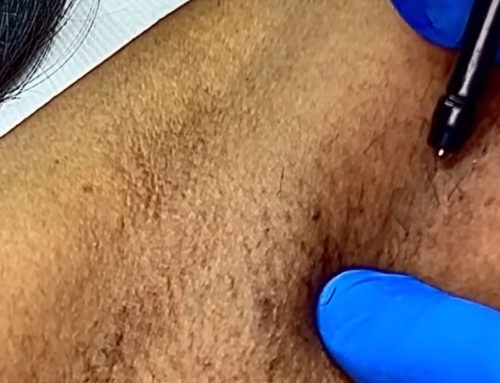One thing we know for sure is that dry, dehydrated skin is never a good thing. But with the right ingredients, it’s 100 per cent possible to transform a tight, flaky complexion into one that’s plump and bouncy.
First, let’s clarify what we’re talking about: dry skin is essentially a chronic condition and occurs when the skin lacks oil. Dehydration is generally a more temporary concern that comes about when the skin is low on water.
Of course, these two issues don’t always exist in tandem, but now the cooler weather has well and truly settled in, we thought it would be helpful to cover all bases. Below, we discuss six of our favourite ingredients to improve dry, dehydrated, lacklustre skin on a biological level. From humble Hyaluronic Acid to the lesser known (but much-loved) Trehalose, keep reading for our top hydrators, and the Skinstitut formulas to match.
Niacinamide
Category: Vitamin, antioxidant
Niacinamide, otherwise known as the physiologically active form of Vitamin B3 or Nicotinamide, is a popular and deserving ingredient that offers a range of unique skin benefits.
One of the most notable features of Niacinamide is its antioxidant properties, which help to repair visible damage from UV light, while protecting against other environmental stressors, including pollutants.
Niacinamide also works to fortify our skin’s surface against moisture loss and dehydration by boosting the production of ceramides – and thus our barrier integrity. So, while it doesn’t directly hydrate the skin, it does reduce the trans-epidermal water loss that can occur when the skin barrier is impaired. Smart!
As a bonus, Niacinamide also refines pore size, unifies skin tone, regulates sebum production, and assists with the reduction of post-acne marking. No wonder it has achieved icon-like status in the skincare world.
Try: Niacinamide Replenishing Cream
Try: Multi-Active Mist
Hyaluronic Acid
Category: Humectant
It’s likely you’ve heard of Hyaluronic Acid before thanks to its ability to hydrate the skin. A popular humectant, Hyaluronic Acid is naturally occurring and can hold up to 1000 times its own weight in water, which means it’s useful when it comes to increasing the moisture content in skin.
Hyaluronic Acid works on the superficial layers of the epidermis, which is why you might notice an immediate plumping effect straight after application. Our hot tip? Apply to damp skin to ensure the skin absorbs the moisture effectively.
When using Hyaluronic Acid or any other humectant ingredient, it’s also essential to layer an occlusive compound like Shea Butter on top to seal in the moisture that is captured. Check out Repair Balm, or Moisture Defence Ultra Dry.
Try: Multi-Active Mist
Try: Moisture Defence Normal Skin
Lactic Acid
Category: Alpha-Hydroxy Acid
Lactic Acid is an Alpha-Hydroxy Acid (AHA) that is traditionally extracted from milk, however it can also be produced synthetically, which is the case for most topical formulas.
In a nutshell, Lactic Acid exfoliates the skin’s surface, dissolving the glue that holds dull, expired cells together. It also boasts hydrating properties and can help to stimulate the production of natural moisturising factors found in our skin.
Because it’s a larger molecule size than other AHAs (such as Glycolic Acid), it’s gentle enough for use on sensitive skin, too.
Try: L-Lactic Cleanser
Glycerin
Category: Humectant
Glycerin might not get as much airtime as Hyaluronic Acid, but it’s another fantastic humectant that works incredibly well to rehydrate and plump the skin.
While Hyaluronic Acid attracts moisture to the skin, Glycerin has a slightly smaller molecular structure, so is able to penetrate the epidermis more effectively and is known to pull water from within the skin. It is excellent when used in conjunction with Hyaluronic Acid or other humectants for long-lasting hydration and a bouncy skin texture.
Try: Multi-Active Mist
Try: Moisture Defence Normal Skin
Try: Hydrating Mask
Try: Ultra-Firming Eye & Neck Cream
Trehalose
Category: Sugar, antioxidant, humectant
Trehalose is actually a sugar, lauded for its moisturising properties and antioxidant benefits. It’s commonly found in plants, where it’s thought to help with cellular repair after exposure to extreme temperatures.
As for skin benefits, Trehalose works to prevent oxidative damage, as well as stimulate our natural moisturising factors. It also draws water into our skin, supporting healthy hydration levels.
Try: Repair Balm
Panthenol
Category: Vitamin, humectant
Panthenol, also known as Provitamin B5, also falls into the humectant category because of its ability to attract and retain water within our complexion. When applied, it converts to pantothenic acid, a naturally occurring water-soluble molecule that works immediately to improve hydration levels.
It’s also thought to be a great soother, making it useful for red, sensitised or easily irritated skin types.
Try: L-Lactic Cleanser
Try: Hydrating Mask




